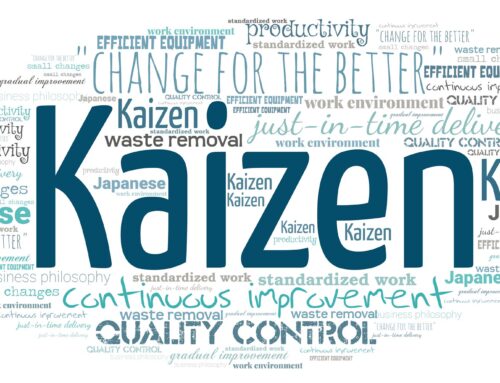Over the past few years, inflation has taken hold throughout our society, placing pressure on everyone from business owners to consumers. In the manufacturing industry, inflation means not only rising costs, but shrinking margins and reduced profitability.
While many in manufacturing are feeling the pressure of inflation, there is a proven strategy available that can help virtually any manufacturer turn economic pressure into a golden opportunity to revitalize their business.
The strategy is called Lean Six Sigma, and using this time to tap into this winning formula gives you the opportunity to thrive where others succumb to the pressure.
At Manex, we’ve seen firsthand how manufacturers throughout Northern California are leveraging Lean Six Sigma to not only navigate global market uncertainties and fight inflation – but emerge stronger than ever.
Today, we’ll explore the benefits of Lean Six Sigma, and how leveraging Lean Six Sigma strategies may be the answer you need to manage rising supply chain costs and remain profitable in the face of inflation pressure.

The Impact of Inflation: Navigating Global Market Uncertainties
Navigating global market uncertainties – geopolitical tensions, natural disasters, unexpected supply chain disruptions – is problematic for nearly every industry, and manufacturing is no exception.
In recent years the price of raw materials of all kinds have skyrocketed. Even utilities, equipment costs, and transportation costs have increased, making it increasingly difficult for manufacturers to keep up with it all.
On top of that managing rising supply chain costs has become even more difficult with tariffs on imported goods adding to the inflationary pressure. While it is tempting to simply increase your own prices in response, or to negotiate price increases with customers, that has the potential double-edged effect of alienating them, leading to reduced demand and customer churn.
While many of these issues are largely out of our control, the situation presents a golden opportunity to turn our attention inward – we can use Lean strategies to offset the cost of inflation seeking continuous process improvement to bring our internal costs under control and position ourselves to withstand inflation.
Reducing Operational Waste With Lean Six Sigma
So what exactly is Lean Six Sigma, and how can it help us fight against inflation?
At its most essential, Lean Six Sigma is a data driven approach to continuous improvement – the idea that we can always strive to improve our own internal processes. Using the tools of Lean in combination with the data driven approach of Six Sigma, we can work to eliminate waste and defects in nearly any manufacturing process.
When looked at through the lens of inflation, Lean Six Sigma is key to ensuring that we get the absolute most value out of every resource.
Core to reducing operational waste with Lean Six Sigma is the identification of eight internal forms of waste. Through continuous improvement in these areas, we not only reduce waste and improve efficiency, but create stronger products that satisfy our clients needs.
These eight forms of waste are:
- Overproduction – Producing more product than is needed not only ties up capital, but requires space to store, inflating holding costs.
- Defects – Products that do not meet specifications must either be reworked or scrapped, driving up material and labor costs.
- Waiting – Delays and bottlenecks waste time in your production process.
- Under-Utilized Talent – The talents, skill, and knowledge of your workforce are easily wasted when not used to their full potential.
- Transportation – Unnecessary movement of raw materials, products, or machinery is waste. Things should only be moved when they absolutely need to be.
- Inventory – Too many raw materials, parts, or other materials constitute a form of waste.
- Motion – It’s not only materials that can be moved inefficiently. Waste of movement with regard to people and their workspaces contributes to inefficiency.
- Over-Processing – Product must meet the customer specifications. Additional work or high quality that is required constitutes waste.
Systematically identifying and eliminating waste in these areas of your own manufacturing processes is a pivotal step in reducing operational waste with Lean Six Sigma. Focusing on eliminating these eight forms of waste not only significantly lowers your operational expenses in the fight against inflation, it ensures that your own products are the best they can be – leading to higher customer satisfaction and brand reputation.
5 Lean Six Sigma Strategies to Offset Cost Inflation
Beyond simply identifying waste, Lean Six Sigma in supply chain management offers a robust toolset of strategies and techniques to offset cost inflation.
Some of these key tools include:
-
Value Stream Mapping
Value Stream Mapping (VSM) is a Lean Six Sigma tool for managing rising supply chain costs by visualizing your entire production process, from raw materials acquisition to finished and delivered product. The birds-eye view of VSM allows you to identify bottlenecks and unnecessary steps, eliminating delays that tie up capital and speed up cash flow.
-
Just-in-Time Delivery
Just-in-Time (JIT) is a lean strategy that can be used to offset cost inflation by accurately predicting demand, and thereby reducing excess inventory – along with the need to store it. With rising supply chain costs, JIT ensures that production meets demand, minimizing the capital tied up in inventory and reducing storage expenses.
-
5S
The 5S methodology is a way of organizing a workspace for optimal efficiency. Its five S’s are:
- Sort
- Set in Order
- Shine
- Standardize
- Sustain
Simple, yet effective, the techniques of 5S eliminate wasted motion, minimize errors, declutter and organize, and ultimately create a safer, more productive work environment. It’s a tangible and easy to implement way of reducing operational waste with Lean Six Sigma that reduces labor costs and helps prevent costly errors and accidents.
-
Kaizen Events
Kaizen embodies the Japanese idea of continuous improvement. These focused, short-term sprints are designed to solve a particular problem or improve a particular process, quickly eliminating waste in a specific area, such as reducing material waste or cutting machine setup times down, leading to immediate cost savings.
-
Poka-Yoke
Poka-yoke is a Japanese term meaning “error-proofing”. It helps eliminate the waste of defects by designing processes in such a way that makes it extremely difficult or even impossible to make a mistake. By error-proofing processes, you can dramatically reduce the expense of rework and material waste, and even warranty claims and customer dissatisfaction.
Manex and Lean Six Sigma: Your Key to Continuous Process Improvement During Inflation
Navigating global market uncertainties is challenging, but the tools to effectively manage rising supply chain costs are available.
Lean Six Sigma in supply chain management offers manufacturers a proven methodology for achieving continuous process improvement during periods of inflation for organizations committed to continuous improvement.
At Manex, we’ve helped manufacturers throughout Northern California reduce operational waste with Lean Six Sigma training and implementation since 1995. We work with manufacturers in a diverse range of industries, from biotech to machining and many more.
Our experienced manufacturing consultants are available to guide your teams with Lean Six Sigma training and implementation, helping you reduce waste and increase your efficiency with lasting results.
If you’re struggling to manage rising supply chain costs, don’t wait another minute to get help from Lean Six Sigma experts. Contact Manex today for a free initial consultation on how Lean Six Sigma, and let us help your organization thrive in the face of inflation.


